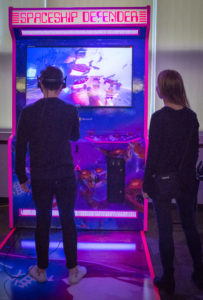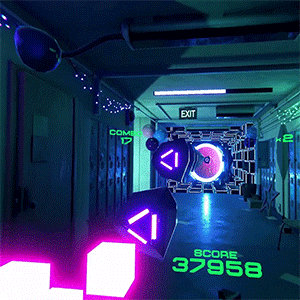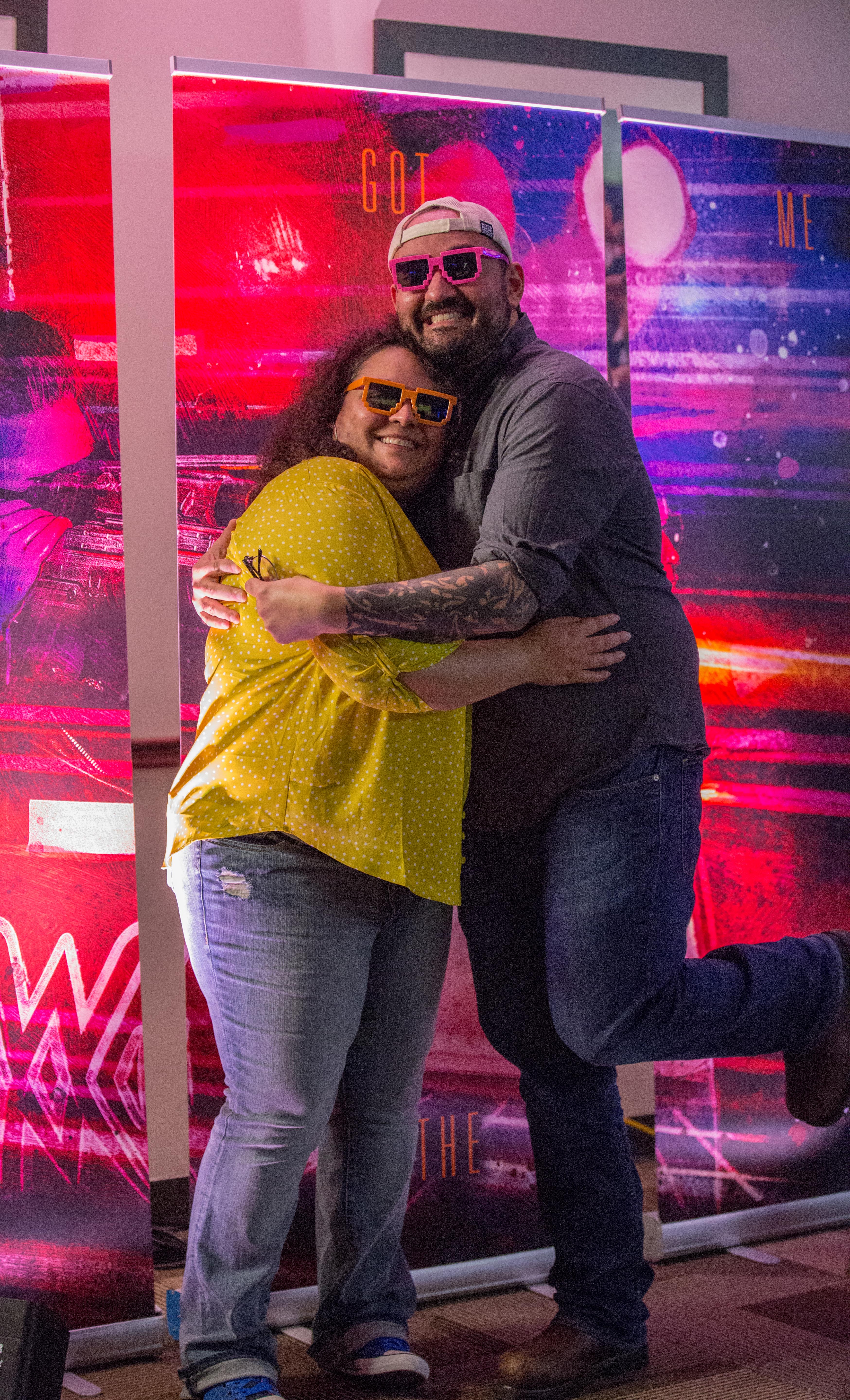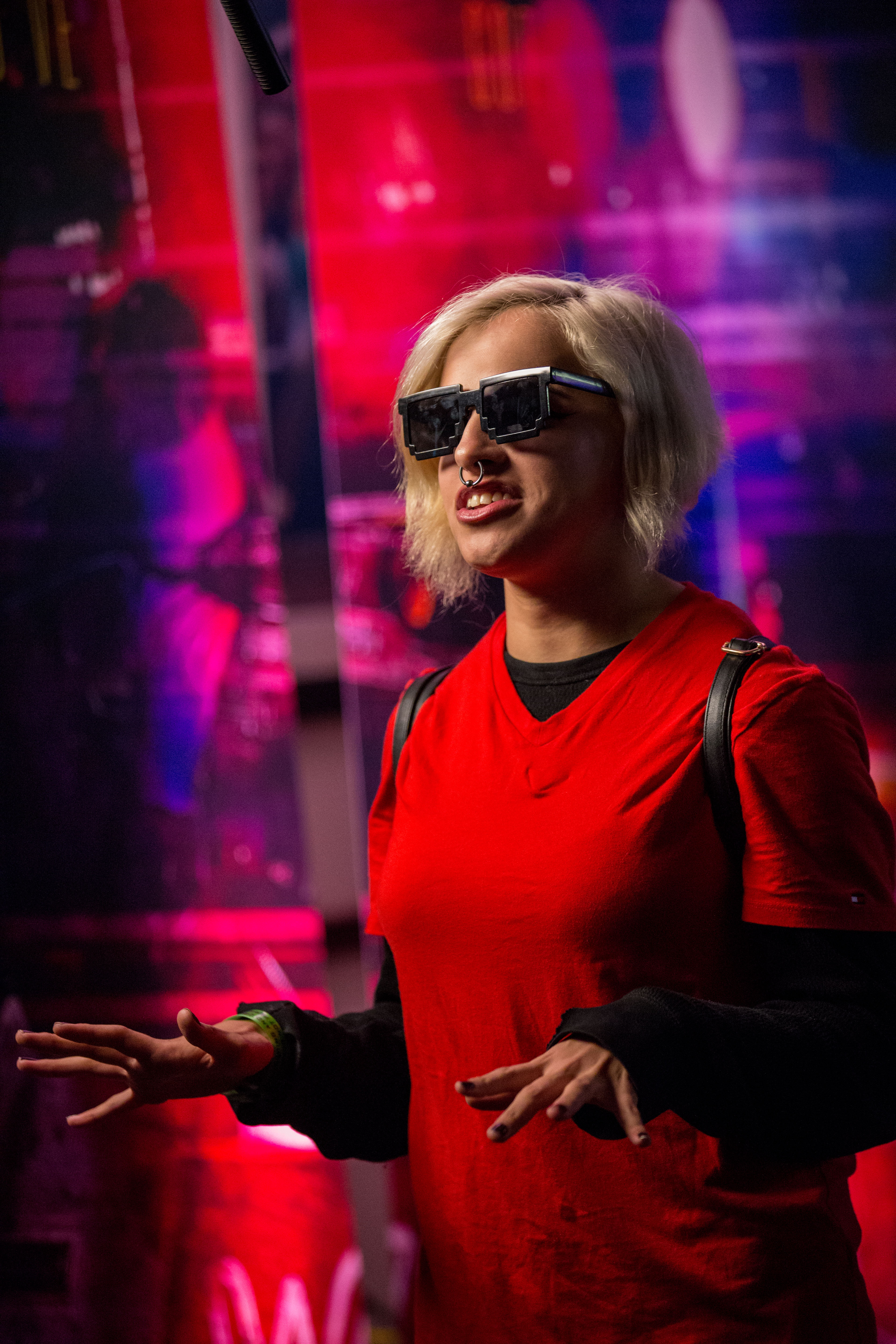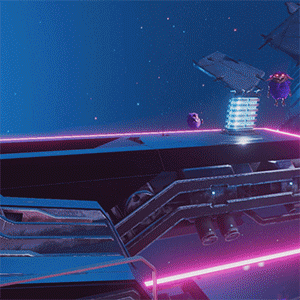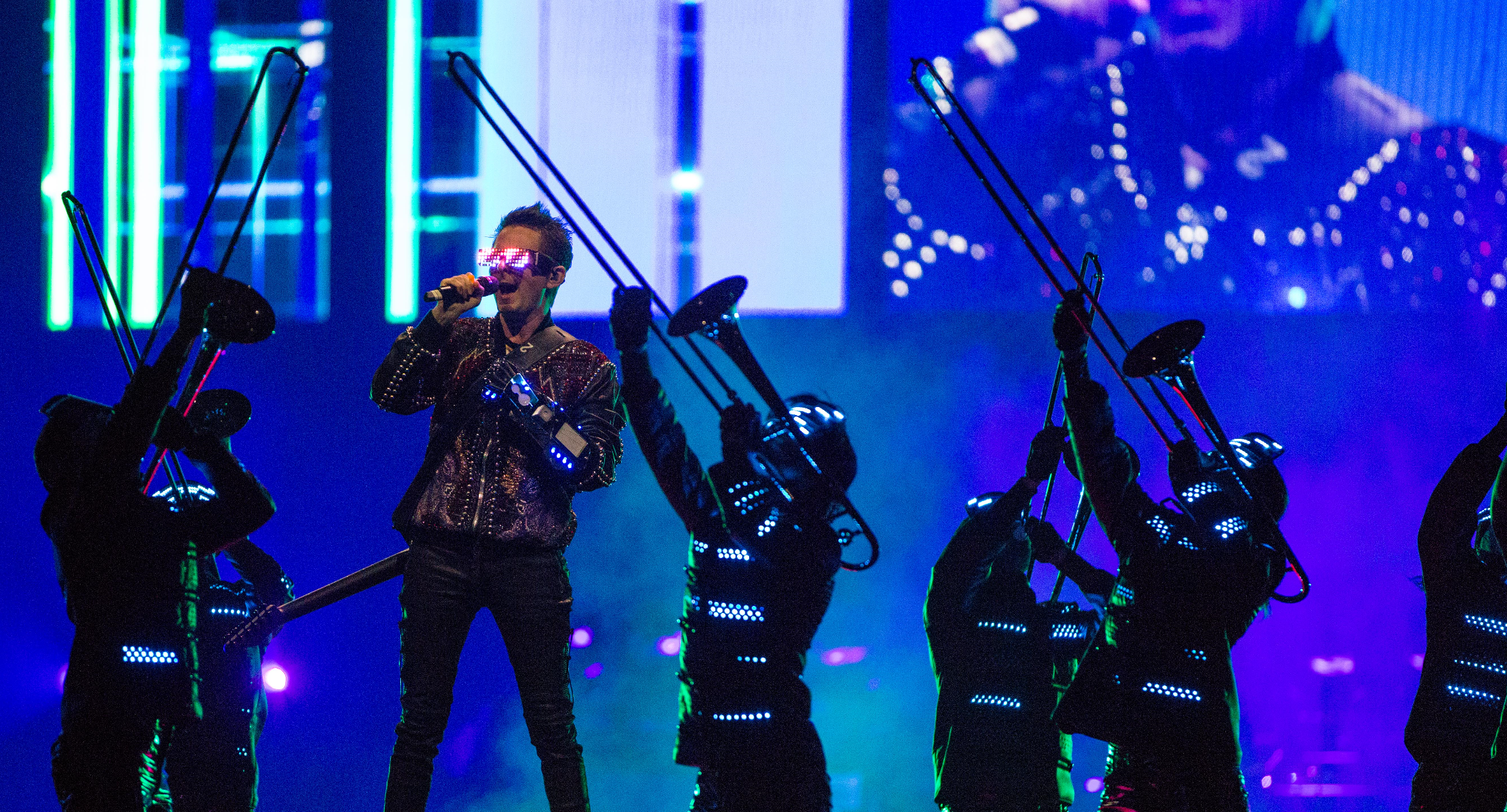
Fans awed by chance to step inside the virtual world of rock band Muse
Jayson Rivera thought he knew virtual reality, but what he experienced at the recent launch of rock band Muse’s world tour blew him away.
The world Rivera stepped into at a pre-show event in Houston, Texas, in late February was unlike anything he’d ever seen. For an hour or so, Rivera and his sister lost themselves in arcade-style virtual reality games set to songs from the band’s new album, “Simulation Theory”.
Donning VR headsets, they defended a spaceship from furry critters, steered a speeding car through futuristic cityscapes and punched geometric objects flying at them down a retro school corridor. Taking a break from the games, they surveyed the ’80s-flavoured scene with delight as speakers pumped out tunes by The Smiths and Talking Heads, fans strolled around in neon-coloured sunglasses and servers passed trays of appetisers.
“I’ve been exposed to VR for a very long time in the medical field, but never anything like this,” says Rivera, who lives in La Porte, Texas, and uses VR in his job training nursing students. “This is something otherworldy. I love it. I love it.
“I enjoy being involved with games rather than sitting with a controller. This puts you in the middle of everything, and it’s so visually stunning. It’s so delicious. I want more. I want more colour, I want more action, I want a longer play time.”
His sister, Janice Rivera, had never tried VR games before and was equally impressed. “It’s amazing,” she says. “It’s beautiful, actually.”
Nearby, Genesis Twitty pulls off her headset after taking a turn at the driving game. Twitty, who drove 13 hours from New Mexico for the concert, saw the pre-show event at Houston’s Toyota Center as a way to get some insight into the band’s creative process.
“I thought it was going to be a really good experience to see what they’re doing,” she says. “I like that the band is doing a lot more to interact with their fans. It’s interactive, even though they’re not here. It’s vital.
“And the whole simulation thing, how they’re bringing it to life through the games, that’s really fun.”
Microsoft collaborated with Muse to develop the three games, which blend imagery and themes from the album’s music videos and live show into a retro-inspired sci-fi mashup.
The Houston show kicked off the tour, which will feature the games at pre-show events in more than 40 cities across the US, Canada and Europe over the next five months.
“We’re not just playing music. We’re imagining these shows, imagining all these different visuals.”
— Muse frontman Matt Bellamy
The driving game, dubbed “Retrograde Racer”, is set to “The Dark Side” and takes players through a landscape reminiscent of the one Muse frontman Matt Bellamy steers through in the song’s video. The stage for Muse’s live shows looks like the ship in the “Spaceship Defender” game, which is set to the song “Pressure” and has players battling purple critters that appear in several of the album’s videos. The “Simulation Striker” game, in which players knock out objects hurtling at them in time to the song “Algorithm,” echoes the hallways seen in a few of the videos.
The Muse collaboration is part of Microsoft’s Music x Technology initiative, launched in 2015 to use the company’s technology to present music in new, innovative ways. Bellamy, who’s long been intrigued by virtual reality, saw VR games as a way to draw Muse fans into “that visual world we were imagining as we were making the songs”.
“We’re not just playing music. We’re imagining these shows, imagining all these different visuals,” he says. “Listening to music is often a relatively passive experience. (The games are) taking people that extra level of depth to give them a deeper experience of the music.
“I think people are interested to find new ways to immerse themselves in experiences.”
Microsoft worked closely with the band — Bellamy, drummer Dominic Howard and bassist Chris Wolstenholme — to create the games. Their ’80s-influenced aesthetic draws from the album’s construct of a meta-modern world that borrows from various eras and might itself, according to the hypothesis referenced in the album title, be simply a simulation.
The mixing of elements between the games, the album videos and the live show plays with that idea, says the band’s creative director, Jesse Lee Stout.
“We’ve kind of reached a point where what is modern is always regurgitating things from the past,” he says. “We’re creating these worlds that harken back to our salad days, our nostalgic past.
“And if we’re in this virtual world, maybe the rules aren’t so strict and maybe this character is doing something else in this other world. We wanted to create this holistic world.”
Amy Sorokas, director of Brand Studios for Microsoft, says the band was involved in each step of creating the games and had a clear vision of what it wanted to accomplish.
“There were continuous discussions with the guys around what they wanted the games to be and how they wanted them to come across,” she says. “Everything came together really nicely to help them achieve their vision of giving fans a chance to literally step inside the world they created around the music.”
But the project posed some unique challenges. The games had to be simple to play, even for fans who aren’t gamers or familiar with VR. The concepts for them had to be straightforward enough to immediately understand, but still engaging and fun.
“We didn’t want to create a strategy or a puzzle game that someone needs to spend 20 hours on and no one else at the venue is going to get to play it,” Stout says. “In a normal videogame environment you would learn after playing a couple of times, but we don’t have the luxury of one user being able to play these five or six times, maybe, to catch up. The learning curve had to be immediate.”
Shawn Wright, principal creative director of HoloLens Experiences at Microsoft, provided guidance as the games evolved. He advised spreading out the movements required of players to ensure, for example, that a trigger finger wouldn’t get fatigued, or a player’s neck wouldn’t get sore from looking down too much. Wright also suggested thinking about how the games would look to bystanders as they’re being played.
“When you watch people do VR you can’t see the holograms, but if you see what they’re doing and it looks interesting, you’re going to want to try it,” he says. “You want it to look cool and appealing to other people.”
The team originally planned to include accelerator and brake pedals in the driving game and put the player inside the car. But situating the player inside the vehicle risked causing disorientation or motion sickness, particularly for people not used to VR, so Wright recommended a vantage point that removes the player from the car and suggested ditching the pedals.
And since each game was limited to a song length, he emphasised the importance of every moment.
“You don’t have a lot of time, so anything you put in the game has to earn its way and has to be meaningful,” Wright says. “You’ve only got four minutes to make the first and last impression, so you want it to be good.”
Muse have long embraced technology in their album themes and their extravagant live shows have featured elements such as drones, flying robots, giant satellite dishes and pyrotechnics. The VR games, which will only be available at the pre-show “enhanced experiences”, use technology to create a new type of experience for fans, Sorokas says.
“This puts you in the middle of everything, and it’s so visually stunning … I want more.”
— concert attendee Jayson Rivera
“I think fans are looking for ways to get close to the artists they love, to understand more about them, be able to see more content from them and have different ways of being able to understand their music,” she says. “I think there’s a desire to find ways to make those connections.”
Bellamy envisions Muse using VR in other ways in the future, like possibly recreating a small venue the band played in its early days to provide a more intimate experience for fans.
“Doing things that you can’t do in real life — that’s what’s going to be exciting,” he says.
All photos by Jay Carroll.


